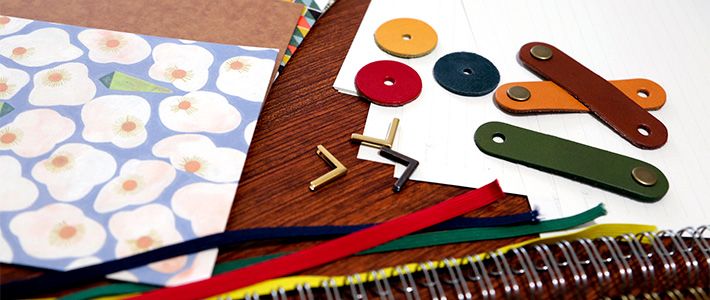
The Simple Joys of Japanese Stationery
Celebrating the Joy of Writing with Kakimori Made-to-Order Notebooks
Guideto Japan
Culture- English
- 日本語
- 简体字
- 繁體字
- Français
- Español
- العربية
- Русский
A Tailored Fit
To make a trip to stationery seller Kakimori’s store in the historic Kuramae neighborhood of Tokyo is to experience a celebration of writing. Visitors are greeted by the rows of wooden shelves filled with pens and pencils, bottles of ink, and reams of paper. Closer inspection of the shop’s offerings reveals an array of snaps and fasteners, colorful ribbons, and brightly designed coverings, all items that Kakimori uses to create its premier personalized notebooks. Even as the world increasingly marches to a digital beat, these order-made notepads continue to win the hearts of writers, sketchers, and other devotees of pen and paper.
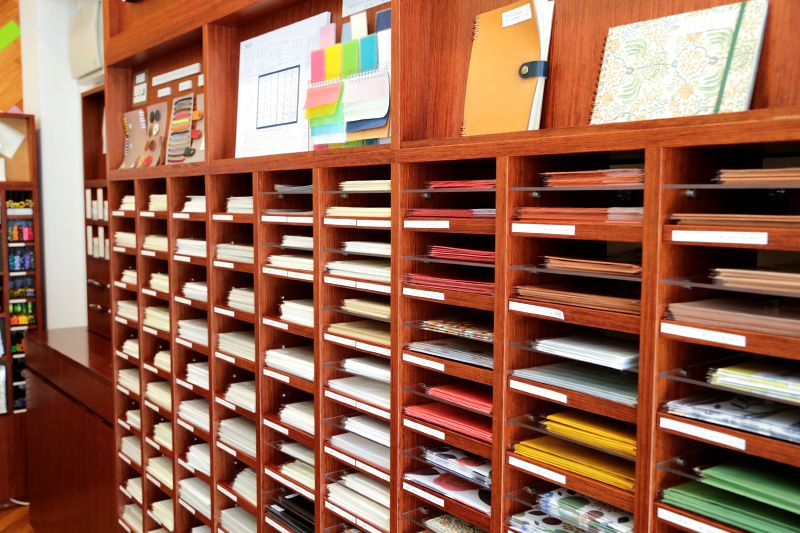 Kakimori offers a wide selection of paper for their designer notebooks.
Kakimori offers a wide selection of paper for their designer notebooks.
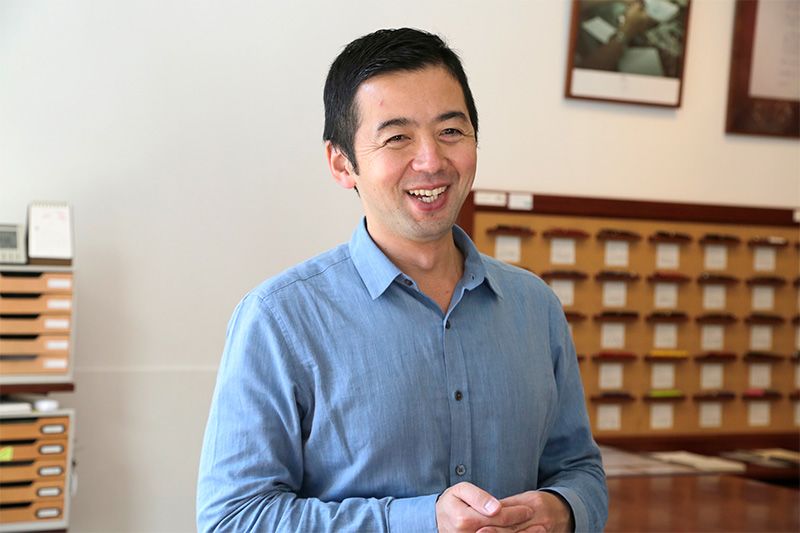 Owner Hirose Takuma talks about the concept and history of Kakimori.
Owner Hirose Takuma talks about the concept and history of Kakimori.
 The binding process takes around 20 minutes to complete.
The binding process takes around 20 minutes to complete.
Kakimori is the brainchild of owner Hirose Takuma, who opened the shop in 2010 as a place for writing fanatics. He stocks the store’s shelves with an impressive lineup of fountain pens and other items carefully chosen from leading Japanese and overseas stationery brands, winning him accolades for his taste in products. But it is Kakimori’s customized notebooks that have turned the Kuramae store into a popular stop-off for Japan’s profuse population of stationery lovers.
To create a notebook, customers choose from 60 cover types, including solid hues and decorative designs, and 30 varieties of paper. To add a personal touch and bind everything together, Kakimori provides a broad range of rings, ribbons, and fasteners in attractive colors. After selecting the various parts, customers hand everything over to staff who bind the notebooks in around 20 minutes.
Looking back, Hirose admits he had his doubts about the customized items. “We had almost no customers the first year, which really had me sweating bullets,” he chuckles. The shop eventually saw traffic inch upwards, though, as the Kuramae area developed into a trendy center with fashionable shops targeting creative types. “At first, most of our customers were just looking to make a fashion statement with cute notebooks,” he explains. “Thankfully, people are now putting a lot more thought into the item they want. They have very specific ideas about use and design, and our staff enjoys helping them create a personalized product. “
Savoring Writing
The popularity of Kakimori’s notebooks may seem anachronistic as society grows increasingly reliant on electronics. But Hirose says that an outcome of smartphones and computers taking up more of our attention is that customers now have a greater appreciation for the act of writing, and are willing to open their wallets accordingly. He notes that early on people generally spent between ¥1,000 to ¥1,200 on a notebook, but now typically lay out around ¥2,000.
Kakimori’s model has bred competition, but Hirose is confident connections with local craftsmen in Sumida, a neighboring municipality in Tokyo, have positioned the brand for continued success. “The barriers for entering the market are rather low,” he says. “All you need are some covers, paper, fasteners, and a machine to bind them all together. However, we’ve been able to create our extensive lineup of items by tapping into the heavy concentration of printing, stamping, and other shops in the area. There really is no other place like it in Tokyo. Having ready access to a variety of skilled craftsmen has enabled us to offer a quality product at an attractive price.”
Ink Creations
In 2014 Hirose expanded his made-to-order approach by opening Inkstand, a specialty shop where customers can create colored ink for fountain pens. After closing temporarily, the store reopened its doors in 2016 and now accepts up to 20 reservations daily.
“We initially sourced our ink from a maker in the United States,” Hirose explains. “The quality was excellent, but there were supply chain issues, so we had to close shop for a while. In the interim we worked with a Japanese art supply firm to develop an original pigment-based line with fourteen basic colors.”
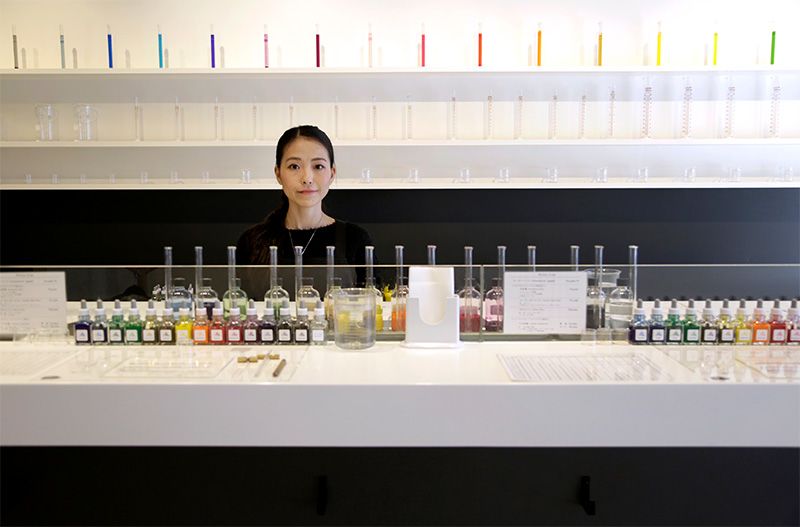 The mixing counter at Inkstand.
The mixing counter at Inkstand.
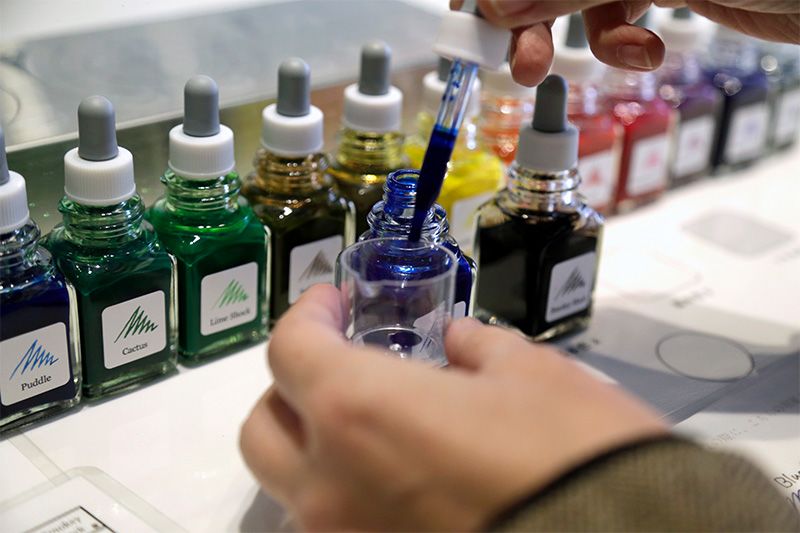 Customers can mix up to three base colors to create their own one-of-a-kind ink.
Customers can mix up to three base colors to create their own one-of-a-kind ink.
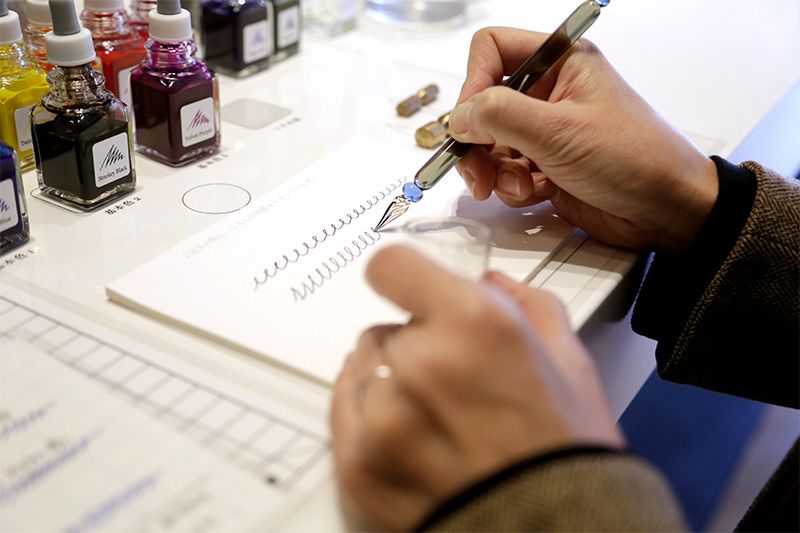 Repeated mixing and testing are required to reach the desired color.
Repeated mixing and testing are required to reach the desired color.
The process of creating a customized ink is simple: choose up to three colors and blend these to create an original hue. Staff at the shop’s mixing counter help customers as they test and retest their creations until the desired balance is achieved.
The service has gained popularity in Japan as well as overseas through social media, and foreign visitors now make up a growing portion of Inkstand’s clientele.
Writing for Fun
To keep up with its growing popularity, Kakimori in November 2017 moved to a roomier location a few blocks away from its original Kuramae store. “The old shop would get so crowded that staff couldn’t look after customers properly,” remarks Hirose. Along with making it easier for people to browse the store’s offerings, the extra space has allowed for new services. “We now offer different binding options for notebooks together with our standard spiraled version. We have also been able to expand our selection of overseas stationary.” He notes there are even plans in the works to offer order-made fountain pens.
Hirose looks to continue promoting the simple pleasure of writing by further developing the brand in Japan and overseas. Details have yet to be released, but a new shop is set to open at the old Kuramae location in February. Beyond Japan’s borders, Kakimori products are already available at shops in Taiwan, and Hirose hopes to branch out to the United States and Europe.
(Originally published in Japanese on December 29, 2017. Photos by Nagasaka Yoshiki.)